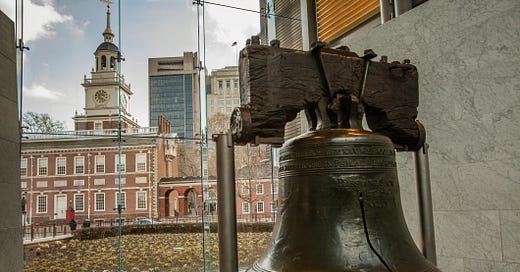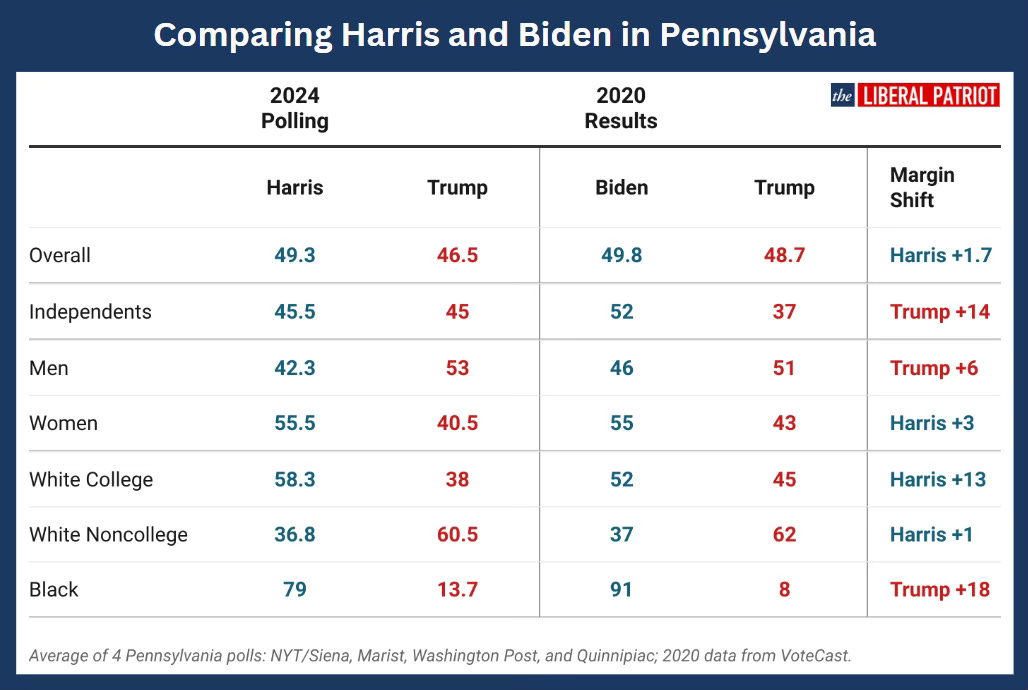Education and Gender Polarization Will Decide Pennsylvania
What the latest Keystone State polling tells us about the race.
After a lengthy drought, analysts saw a flood of high-quality Pennsylvania polls last week. The data was largely good news for Kamala Harris: a four-point lead in the New York Times/Siena poll, a six-point lead courtesy of Quinnipiac (generally a rosy pollster for Democrats), a one-point lead in the Washington Post poll, and a tie from Marist. All in all, a two- to three-point lead for Vice President Harris—a hair higher than her advantage in polling averages.
This data dump allows for some interesting statewide subgroup aggregation, a process usually handicapped by limited crosstab availability. Armed with larger sample sizes, we’re able to get a more detailed look at the emerging Harris and Trump coalitions in Pennsylvania—and how they’ve shifted from four years ago.
Across the four polls, Harris and Trump are practically tied with Pennsylvania independents with a chunk still undecided. Four years ago, Biden won independents by 15 points, suggesting Harris has work to do with less-engaged, moderate voters. Despite a strong debate performance, she remains a somewhat undefined candidate—a fact her campaign is trying to remedy by blanketing the airwaves with positive biographical ads, rather than anti-Trump spots.
Unsurprisingly, Harris looks likely to improve upon Biden’s numbers with women, while Trump has expanded his lead with men. The former president appears aware he has work to do with women voters. At a Pennsylvania rally Monday, he told the women in the crowd, “I want to be your protector…You will no longer be thinking about abortion.” To put it kindly, I’m not sure that this Jedi-mind-trick approach will cut into his deficit—but regardless of his strange outreach, the gender gap is poised to grow more severe this year.
The good news for Trump? He pulls almost 14 percent of Pennsylvania’s black population, a six-point improvement from 2020. Though Harris has ticked up with black voters in recent weeks, the evidence of at least some slippage with this core Democratic constituency remains pretty strong—racial depolarization the Trump campaign will welcome with open arms.
But more than any other demographic factor, the white college/non-college gap will decide Pennsylvania. Harris leads with white college voters by a whopping 20 points—a double-digit improvement from Biden 2020. Such marked improvement with white college voters (~30 percent of the Pennsylvania electorate) would more than counteract a drop in black support (~11 percent of the Pennsylvania electorate).
As the clock ticks down, both candidates will surely receive some favorable Pennsylvania polls. But as obsession with the horse race number grows, keep an eye on the underlying gender and education gaps—they might just decide the election.







a good, short analysis of the demographic numbers. Thanks.
Harris "....remains a somewhat undefined candidate..." Somewhat? What kind of gaslighting is that?